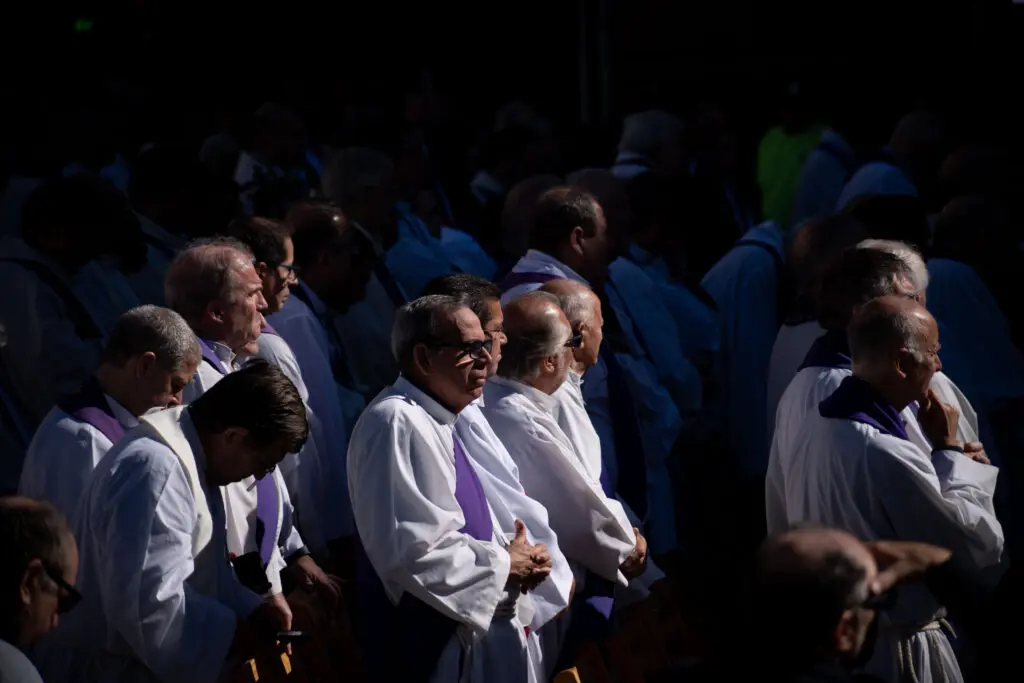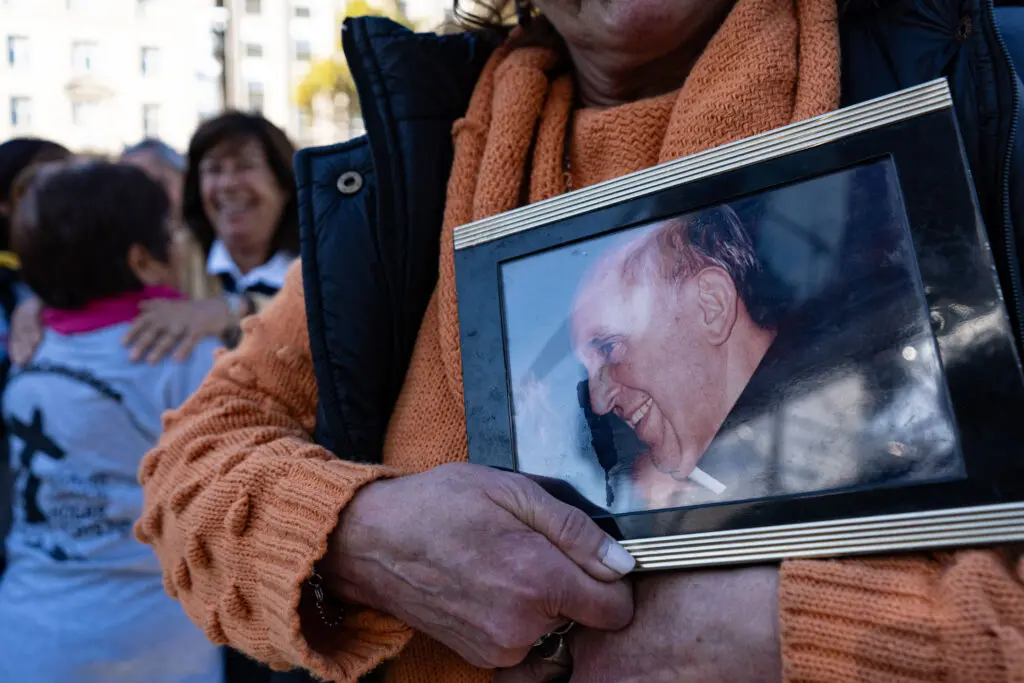From the village to the Cathedral: The People Bring Pope Francis’ Legacy to Life in Argentina

Photo: teleSUR / Nicolas Hernandez
April 27, 2025 Hour: 3:17 pm
The legacy of Francis, the Pope of the Poor, continues to inspire positive change and inclusivity across the globe. His teachings serve as a beacon of light in the pursuit of a more compassionate and equitable world.
It is Saturday, and lingering puddles from the previous night’s rain reflect the early morning sun as people begin to gather near the Virgen del Rosario Chapel.
This vibrant scene is unfolding in the Güemes sector of the Padre Mugica neighborhood, one of the nine localities that make up this bustling community.
Not long ago, this area was known as Villa 31, a place where Jorge Bergoglio, now known to the world as Pope Francis, walked ten blocks through mud to bring the sacraments to those living in poverty.
The legacy of Pope Francis is not merely an ecclesiastical narrative; it is lived and breathed daily by the people of this neighborhood.
They remember him not only for his revered title but for his humble ways. He traveled by public transport and engaged directly with the community, emphasizing a message of hope and dignity for the marginalized.

The Heartbeat of Padre Mugica
In the quiet moments at the chapel, Father Nacho emerges from a small office, dressed in traditional “bombacha de campo” trousers and sandals, exemplifying a connection to the land and its people.
His hands bear witness to conversations with community members, who arrive, sharing stories wrapped in nostalgia.

Among them is Marta, a Bolivian immigrant who recalls the joy surrounding the announcement of Bergoglio’s papacy.
“It was a time of great celebration,” she says, her eyes sparkling with memories. “He was so close to us, to the humble neighborhoods.”
Her words resonate deeply, painting a picture of communal joy that reverberated through the streets. While the media may have overlooked their story, they felt seen and heard on that momentous day.
Diego Pietrafesa, who has dedicated 20 years to serving in the neighborhood, emphasizes the significance of giving voice to the voiceless, echoing the ethos of both Bergoglio and Father Mugica.
“It’s not that the poor lack a voice,” he points out, “but rather, nobody listens.” Through his role, Pope Francis amplified the voices of the underprivileged, fostering a more inclusive dialogue within both the church and society.

A Journey of Faith and Unity
As the day progresses, the community gears up for a pilgrimage to the Cathedral of Buenos Aires.
With over 40 participants gathered, the air is filled with camaraderie and hope. Flags flutter in the breeze, a testament to their diverse backgrounds and shared mission.
As they commence their march, Father Nacho leads a prayer, proclaiming, “¡Viva el Papa Francisco!”
The rhythm of the procession captures the spirit of the people. It is a blend of joy and sorrow, laughter and remembrance, as they walk together toward the cathedral, where a mass honoring Pope Francis takes place in tandem with his funeral in Rome.

The gathering at Plaza de Mayo sees representatives from all walks of life, reflecting the unity that Bergoglio preached.
The archbishop Jorge García Cuerva addresses the assembled crowd, calling for unity among the faithful.
“For a father,” he states, “there is nothing worse than seeing his children divided.” His words resonate, reminding everyone that the values embodied by Pope Francis transcend boundaries and divisions, urging compassion and solidarity.
Walking the Path of Change
The ceremonial atmosphere continues to evolve as the congregation prepares for a procession dubbed “The Path of Francis.”
This journey symbolizes the struggles and resilience of the marginalized communities that Bergoglio dedicated his life to.
As they pass key sites representing social exclusion, such as the Jose Tiburcio Borda psychiatric hospital and Villa 21-24, the community embodies the message of inclusion and recognition that was central to the Pope’s teaching.

Father Nacho explains that this annual march will serve as a constant reminder of Pope Francis’s commitment to the needy, a call to action for the Church to remain grounded in the reality of the people.
It is a joyous affair marked by vibrant music and spirited chants, embodying the culture and warmth of the community.
“Each step we take is a reflection of what he stood for: a church in the streets,” affirms Father Nacho. The procession concludes at the basilica of San José de Flores, where the journey began for Bergoglio, symbolizing a full circle of faith and community engagement.
A Lasting Legacy
Pope Francis’s influence in Argentina is not confined to the walls of the Vatican; it thrives in the hearts of the people he served.
From the streets of the Villa to the hallowed halls of the Cathedral, his legacy is one of compassion, humility, and a profound connection to the marginalized.

The community’s dedication to honoring his memory through collective action and spiritual journeys ensures that his message of hope echoes for generations to come.
In every prayer, every march, and every shared moment of joy, the essence of Pope Francis lives on, demonstrating that true leadership lies in serving others, uplifting them, and walking alongside them in their struggles and triumphs.

As the procession makes its way through the streets of Buenos Aires, it becomes clear that the spirit of Pope Francis transcends his papacy; it resonates in the everyday lives of the people he cherished most—the humble, the forgotten, and the brave.
By Nicolas Hernandez / teleSUR English

